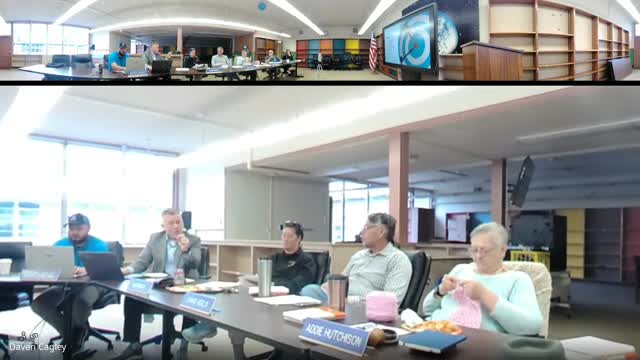Education leader calls for urgent reforms to boost student success
August 17, 2024 | Coos Bay SD 9, School Districts, Oregon
This article was created by AI summarizing key points discussed. AI makes mistakes, so for full details and context, please refer to the video of the full meeting. Please report any errors so we can fix them. Report an error »

In a recent government meeting, education leaders outlined ambitious goals for improving student outcomes, aiming for a 90% success rate next year and 95% the following year. The discussions emphasized the need for accountability systems and strategic actions to ensure these targets are met.
A key focus was on the importance of equitable access to quality education, particularly for vulnerable student populations. Leaders expressed a commitment to moving away from a \"teacher lottery\" system, advocating for a structured approach to ensure all students have access to great teachers and effective schools. The conversation highlighted the necessity of proportional representation in advanced placement (AP) classes, reflecting the demographics of the student body.
The meeting also addressed the challenges facing the district, including low proficiency rates in literacy and mathematics. Current statistics reveal that only 29% of third graders meet language arts proficiency standards, significantly below the state average of 40%. Additionally, only 15% of eighth graders are proficient in mathematics, compared to the state average of 26%.
Attendance emerged as a critical issue, with regular attendance at just 54%, below the state average of 62%. The leaders acknowledged that improving attendance is essential for enhancing overall student performance and graduation rates, which currently stand at 69%, also below the state average.
The discussion included a review of the district's advanced placement program, which has seen low participation and success rates compared to national averages. Only 9% of students take AP exams, and just 2% pass them, compared to national averages of 35% and 22%, respectively. Leaders recognized the need for a cultural shift to encourage more students to enroll in AP courses and to support them effectively.
Overall, the meeting underscored a collective commitment to fostering a culture of high expectations and support for all students, with a clear focus on data-driven strategies to address the challenges ahead. The leaders expressed optimism about the potential for improvement, emphasizing that with the right systems in place, they can achieve their educational goals.
A key focus was on the importance of equitable access to quality education, particularly for vulnerable student populations. Leaders expressed a commitment to moving away from a \"teacher lottery\" system, advocating for a structured approach to ensure all students have access to great teachers and effective schools. The conversation highlighted the necessity of proportional representation in advanced placement (AP) classes, reflecting the demographics of the student body.
The meeting also addressed the challenges facing the district, including low proficiency rates in literacy and mathematics. Current statistics reveal that only 29% of third graders meet language arts proficiency standards, significantly below the state average of 40%. Additionally, only 15% of eighth graders are proficient in mathematics, compared to the state average of 26%.
Attendance emerged as a critical issue, with regular attendance at just 54%, below the state average of 62%. The leaders acknowledged that improving attendance is essential for enhancing overall student performance and graduation rates, which currently stand at 69%, also below the state average.
The discussion included a review of the district's advanced placement program, which has seen low participation and success rates compared to national averages. Only 9% of students take AP exams, and just 2% pass them, compared to national averages of 35% and 22%, respectively. Leaders recognized the need for a cultural shift to encourage more students to enroll in AP courses and to support them effectively.
Overall, the meeting underscored a collective commitment to fostering a culture of high expectations and support for all students, with a clear focus on data-driven strategies to address the challenges ahead. The leaders expressed optimism about the potential for improvement, emphasizing that with the right systems in place, they can achieve their educational goals.
View full meeting
This article is based on a recent meeting—watch the full video and explore the complete transcript for deeper insights into the discussion.
View full meeting
